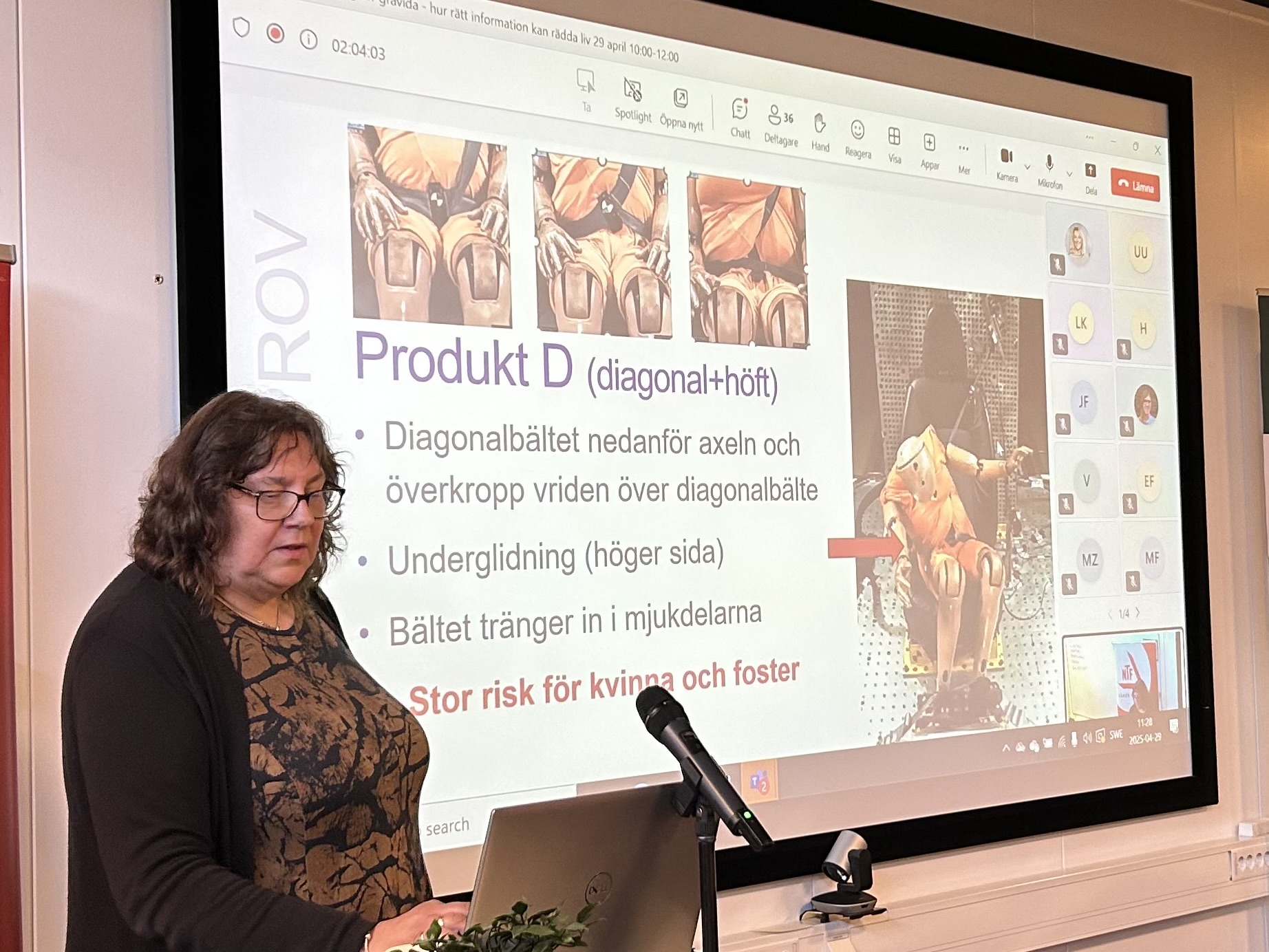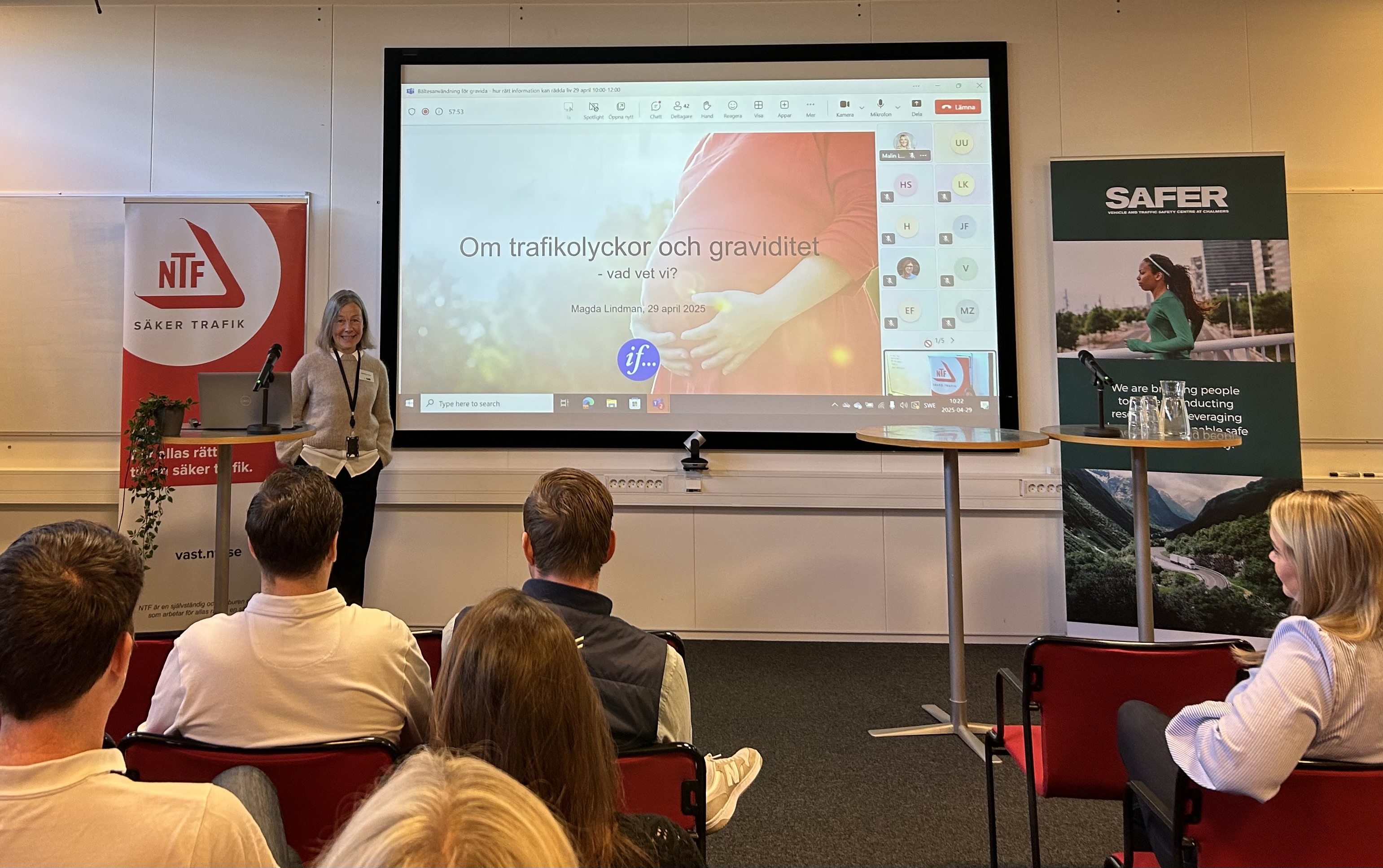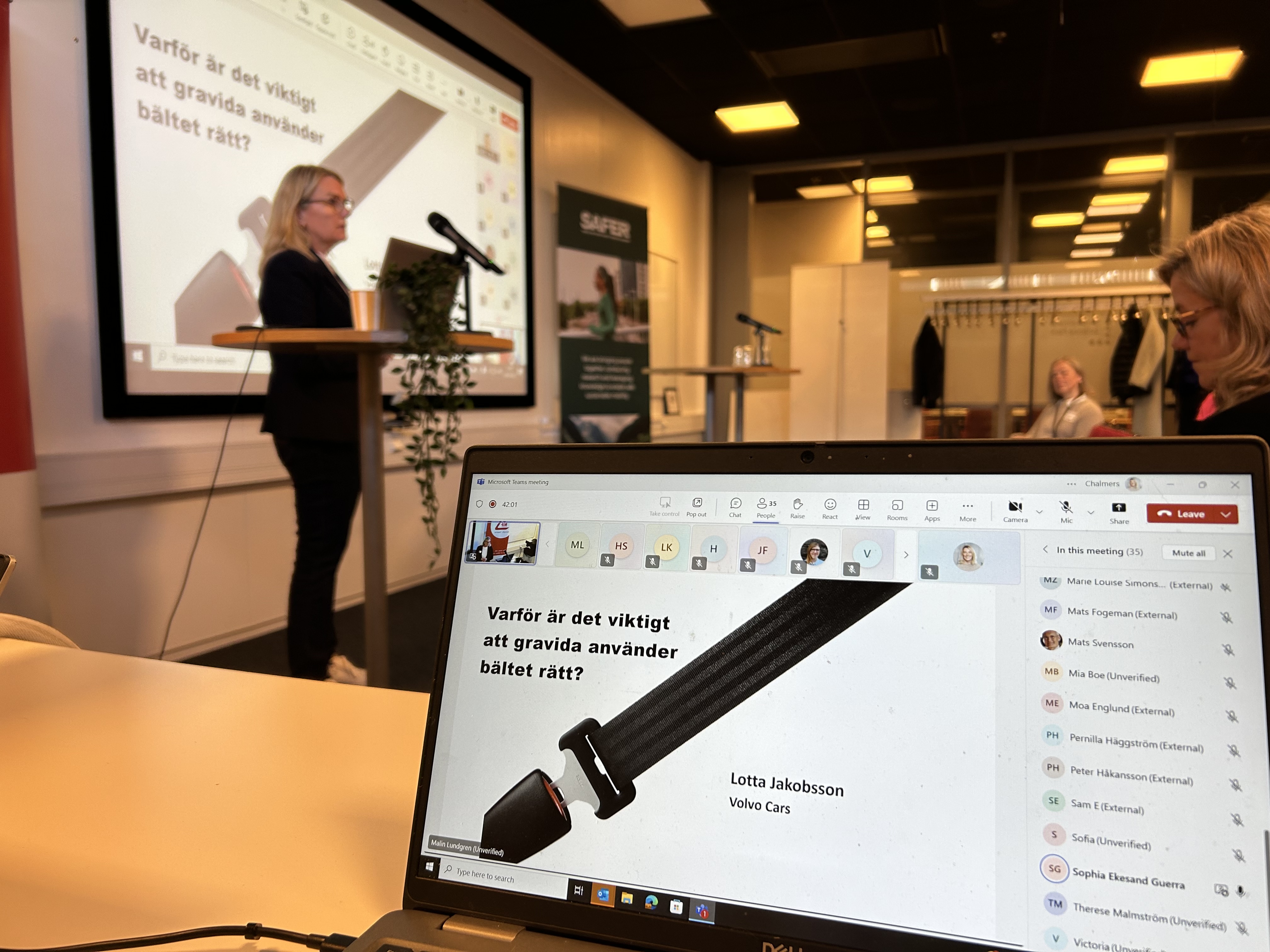Sharing life-saving knowledge: Correct safety belt use during pregnancy
On April 29, experts gathered at Lindholmen Science Park to highlight the life-saving importance of correct safety belt use during pregnancy. With more than 50 years of crash research behind us, the evidence is clear: the safety belt – correctly positioned – remains the most critical protection system in the car, helping to reduce injury risk for both the mother and the unborn child in all types of collisions.
However, research presented by Folksam's senior researcher Helena Stigson paints a worrying picture:
- 99% of pregnant individuals use a safety belt, yet:
- 40% use it incorrectly, most commonly by placing the lap belt across the belly instead of below it.
- 19% actively hold the belt away from the body with one hand while driving.
- 16% use so-called “comfort products” to modify how the belt fits.
- A majority had received no information on correct belt use during pregnancy.
- Only 5% reported getting guidance from their maternity care provider, despite actively seeking information.
This mismatch between intent and guidance shows a dangerous gap – one that leaves many vulnerable.

Comfort products marketed to pregnant drivers and passengers are often presented as safety-enhancing. But testing reveals the opposite: these unregulated devices can move the lap belt off the hip bones or shift the diagonal belt away from the chest – compromising protection during a crash. None of the tested products improved safety – several made things worse.
The panel’s key messages were unequivocal:
- The safety belt must be worn across the hip bones and mid-shoulder, tight to the body.
- Do not add any products to change its geometry.
- Adjust the seat and belt height to manage discomfort instead.
And while the motivation to travel safely during pregnancy is strong, the access to reliable, evidence-based information is clearly lacking. Healthcare professionals – especially those in maternity care – are uniquely positioned to close this gap. When everyone gives the same scientifically supported message, we prevent injuries and save lives.
For more information:


